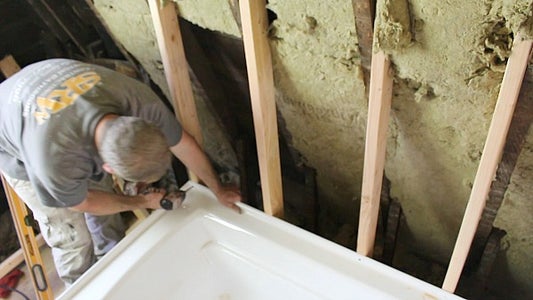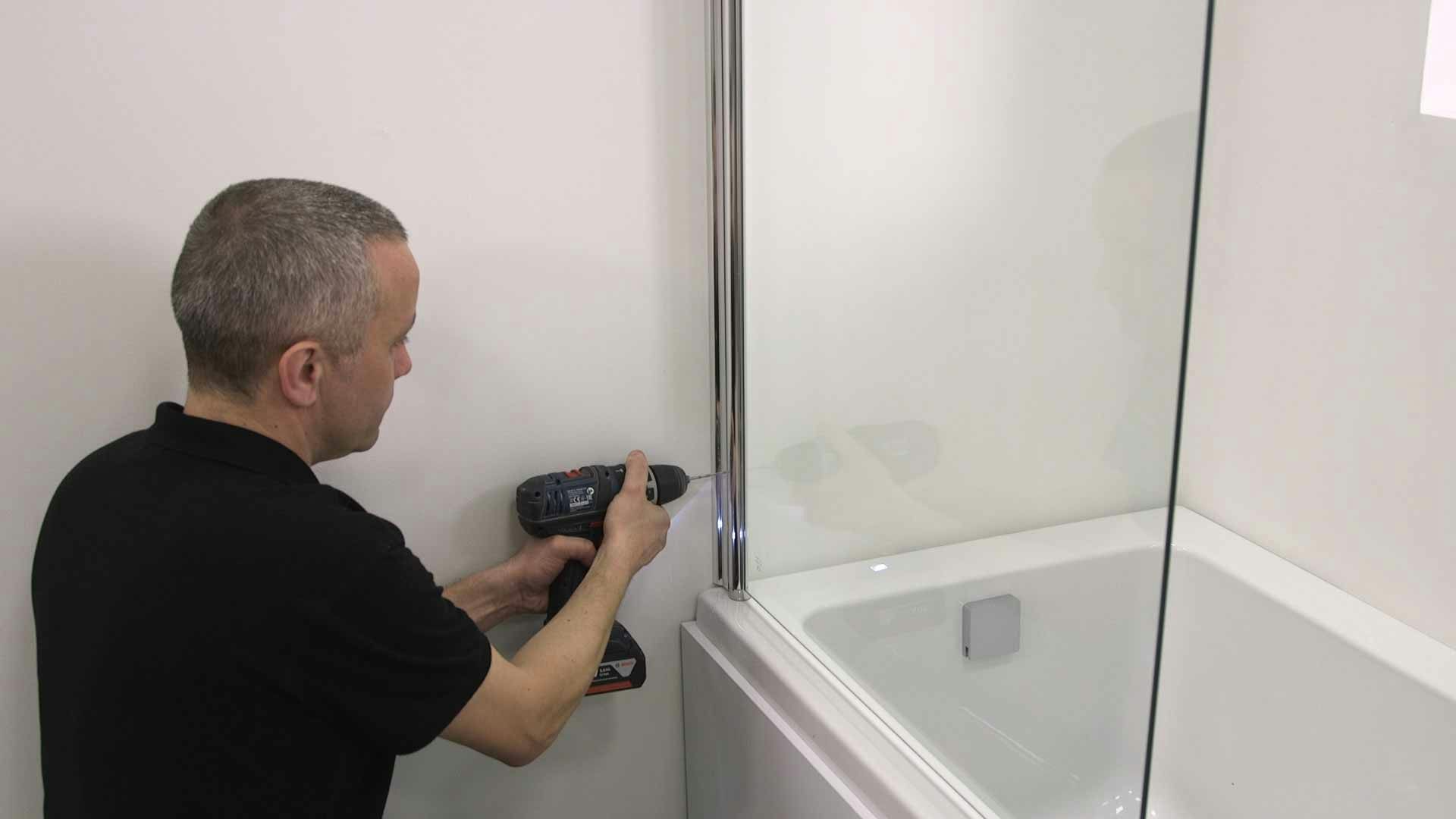Exactly how to Replace a Bath Tub (Step By Step).
Exactly how to Replace a Bath Tub (Step By Step).
Blog Article
We have encountered this great article about How to Install a Bathtub: Install an Acrylic Tub and Tub Surround directly below on the net and reckoned it made good sense to write about it with you over here.

Mounting a tub isn't specifically rocket science, yet it does require strong plumbing, carpentry, and also in some cases, tiling abilities. Replacing an old bath tub with a new one is additionally a moderately hard job. If the old tub is easily accessible, the job can move immediately; if you need to open a wall surface to remove the old bathtub and position the brand-new bathtub, the job is much harder. In either instance, the task is within a home handyman's abilities, although you will certainly need an assistant to move out the old bathtub and set in the brand-new one. Ensure you have actually certified yourself for the task and are comfortable trying it. Instead of working with a professional to take control of a halfway-completed project, it is much better to take into consideration employing one prior to you start. Chances are you might require a professional plumber to make tube connections.
This post will certainly help you set up a brand-new bathtub in your restroom if you have actually currently bought a new bathtub as well as do not require to alter the plan of your previous water pipelines.
Your tools and material checklist need to comprise the following:
Removing Old Touches
If you require to change old faucets with brand-new ones as a part of your installment, after that the first thing you should do is disconnect the water supply. After doing so, turn on the taps to drain any kind of water continuing to be in the system. The procedure of getting rid of the existing faucets can be fairly bothersome as a result of the restricted access that is frequently the situation.
Utilize a basin wrench (crowsfoot spanner) or a tap tool to undo the nut that attaches the supply pipelines to the faucets. Have a towel all set for the continuing to be water that will certainly come from the pipes. When the supply pipelines have actually been eliminated, utilize the exact same tool to loosen the nut that holds the taps onto the bath/basin. You will need to stop the solitary faucets from transforming during this process. Once the taps have actually been gotten rid of, the holes in the bath/basin will certainly have to be cleaned of any old securing substance.
Prior to proceeding to fit the new faucets, contrast the pipe links on the old taps to the new faucets. If the old taps are longer than the brand-new faucets, after that a shank adapter is required for the new faucets to fit.
Suitable New Taps
If the tails of the new faucets are plastic, after that you will need a plastic adapter to avoid damage to the thread. One end of the adapter fits on the plastic tail of the faucet and the other end gives a connection to the existent supply pipelines.
If you require to fit a monobloc, then you will certainly need decreasing couplers, which connects the 10mm pipeline of the monobloc to the conventional 15mm supply pipe.
Next off, position the tap in the placing hole in the bath/basin ensuring that the washing machines are in place in between the tap and the sink. Safeguard the tap in position with the maker offered backnut. As soon as the faucet is securely in place, the supply pipelines can be linked to the tails of the faucets. The taps can either be attached by using corrugated copper piping or with regular tap adapters. The former kind must be connected to the faucet ends initially, tightening just by hand. The supply pipes can later on be linked to the various other end. Tighten up both ends with a spanner after both ends have actually been linked.
Installing the Tub
Using both wooden boards under its feet, put the bathtub in the called for position. The wood boards are useful in uniformly spreading the weight of the tub over the area of the boards rather than concentrating all the weight onto four tiny points.
The following goal is to make sure that the bath tub is leveled all round. This can be accomplished by examining the spirit level and also adjusting the feet on the tub till the spirit level reviews level.
To set up faucets, fit the bottom of the outermost flexible tap adapter to the suitable supply pipeline by making a compression join; then do the very same for the other tap.
Activate the water supply as well as examine all joints and new pipework for leakages and tighten them if required. Load the bathtub and additionally check the overflow outlet as well as the regular outlet for leaks.
Lastly, deal with the bathroom paneling as described in the manufacturer's instruction manual. Tiling as well as securing around the tub needs to wait until the tub has actually been used a minimum of when as this will settle it right into its last position.
Getting ready for the Installment
Firstly, the supporting structure provided with the bath must be fitted (if called for) according to the manufacturer's directions. Next, fit the taps or mixer to the bath tub. When suitable the faucet block, it is important to ensure that if the faucet features a plastic washer, it is fitted between the bath as well as the faucets. On a plastic bath, it is also practical to fit a sustaining plate under the faucets device to prevent strain on the tub.
Fit the adaptable faucet adapters to the bottom of the two taps making use of 2 nuts and olives (in some cases supplied with the tub). Fit the plug-hole outlet by smearing mastic filler round the sink outlet hole, and after that pass the outlet with the hole in the bathroom. Make use of the nut provided by the supplier to fit the plug-hole. Examine the plug-hole outlet for an inlet on the side for the overflow pipe.
Next, fit the end of the flexible overflow pipe to the overflow outlet. After that, screw the pipe to the overflow face which ought to be fitted inside the bathroom. Make certain you utilize every one of the provided washing machines.
Attach the catch to the bottom of the waste electrical outlet on the bath tub by winding the string of the waste electrical outlet with silicone mastic or PTFE tape, and also screw on the catch to the electrical outlet. Attach all-time low of the overflow tube in a comparable manner.The bathroom must currently prepare to be fitted in its final setting.
Tiling Around the Tub
In the area where the bath meets the tile, it is necessary to seal the accompanies a silicone rubber caulking. This is necessary as the installation can relocate sufficient to split a stiff seal, triggering the water to penetrate the wall between the bathroom and also the tiling, causing issues with moisture as well as possible leaks to the ceiling listed below.
You can pick from a range of coloured sealants to blend in your components and also installations. They are offered in tubes and cartridges, and can securing spaces up to a width of 3mm (1/8 inch). If you have a bigger space to fill up, you can fill it with spins of drenched newspaper or soft rope. Remember to constantly fill up the tub with water before securing, to enable the movement experienced when the bathtub remains in use. The sealant can fracture relatively early if you do not take into account this activity prior to sealing.
Conversely, ceramic coving or quadrant ceramic tiles can be used to border the bathroom or shower tray. Plastic strips of coving, which are easy to use and reduce to dimension, are also conveniently offered on the market. It is suggested to fit the ceramic tiles using waterproof or water resistant adhesive and also grout.
Bathtub Installation
How Important Is A Bathtub To Your Home?
High-quality baths, showers, and other bathroom updates are necessary when considering a smart investment in your home. It’s a room that you go to every day and one that is constantly being used by guests.The bathroom is one of the top trafficked rooms in a home and also one of the most valuable in terms of home resale.
Install Piping Before Tub
You will be using your existing drain and waste vent system, but pipes required include the hot and cold water supply lines and a pipe leading to a shower head. A mixing valve and shower head are also needed. Air chambers may be required.
Position the Tub
Lower the tub into place so that the continuous flange fits against the wall studs and rests on 1’x4' or 2’x4' supports. Anchor the tub to the enclosure with nails or screws inserted through the flanges into the studs.
NOTE: Remember, bathtubs and shower stalls may require support framing. A bathtub filled with water is extremely heavy, so check building codes and framing support before installing the tub.
Assemble Drain Connections
Assemble the bathtub drain connections by connecting the tub overflow with the tub drain above the trap, not beyond it. The trap will have a compression fitting that screws over the arm of the overflow assembly.
Place a Pipe For the Shower Head
First, locate a brass female threaded winged fitting and attach it to a framing support via a screw or a nail. Then run a pipe up the wall for the shower head. Sweat or solder the other side of the brass fitting to the top of the pipe.
Attaching Hot and Cold Water Lines
Attach your water lines for both hot and cold by sweating these directly into the hot and cold ports of the mixing valve. The mixing valve will be how water enters the tub’s system, not by the pipes themselves.
Install the Spout
Extend a piece of 1/2 inch pipe, or whichever length is specified in the manufacturer’s instructions, for the tub spout. Sweat on a male threaded fitting at the end of the pipe or use a brass nipple of the proper length and a 1/2 inch cap.
NOTE: At this point you should have your rough-in plumbing work inspected before proceeding further.
Check For Leaks
Restore the water pressure and check the drain connection and the supply pipes for any sign of leaking.
estore the Bathroom Wall
Replace the wall with moisture-resistant drywall as a base for your wall covering. Seal the joints between the wall and your new tub with silicone caulk as protection against water seepage.
https://www.berkeys.com/2016/12/02/bathtub-installation-dallas/

I'm very eager about Installing A Bathtub and I really hope you enjoyed reading my article. Do you know somebody who is sincerely interested in the topic? Be sure promote it. Many thanks for your time. Kindly come visit our site back soon.
Call Us Now Report this page